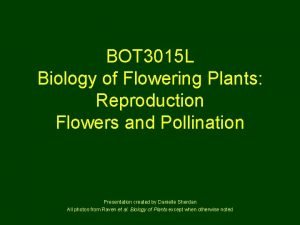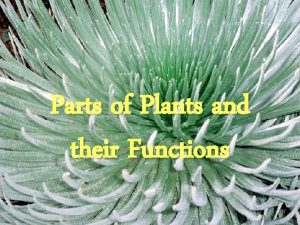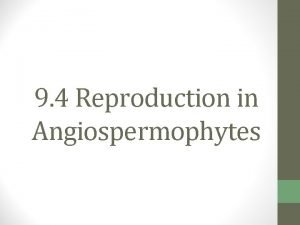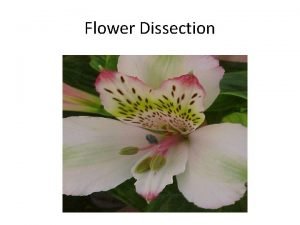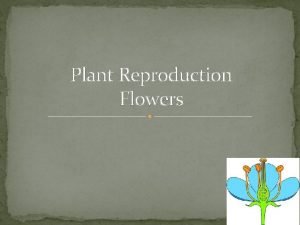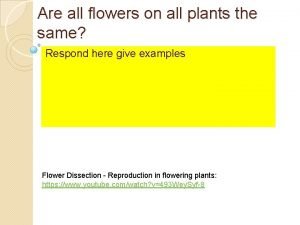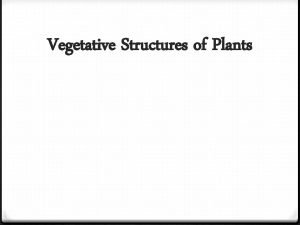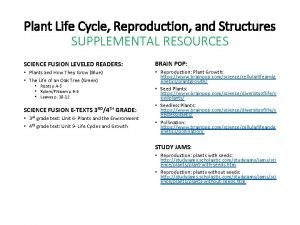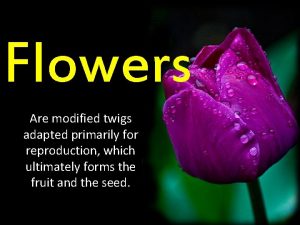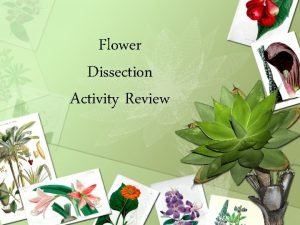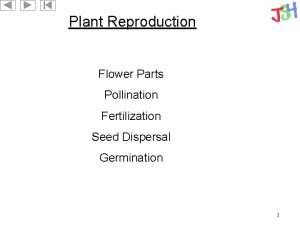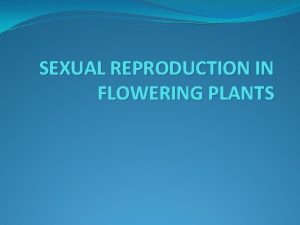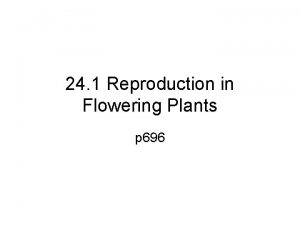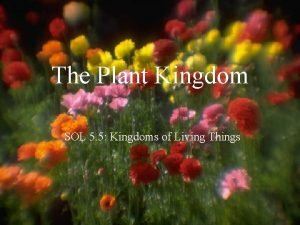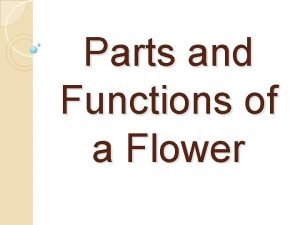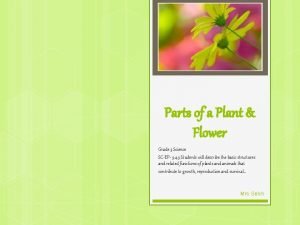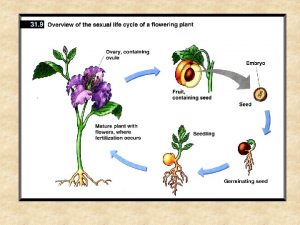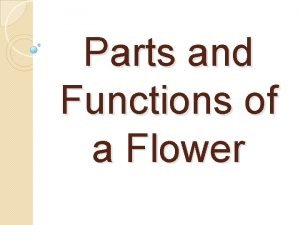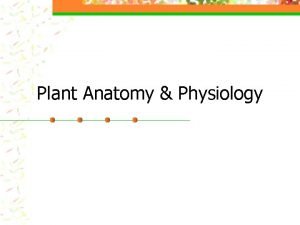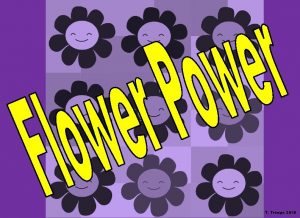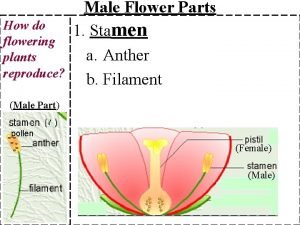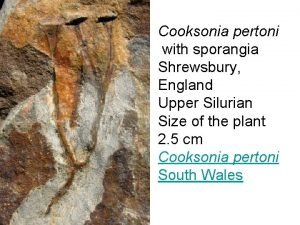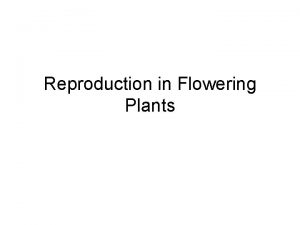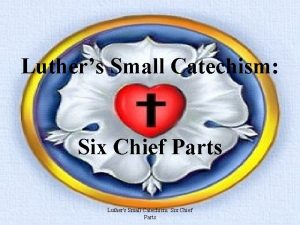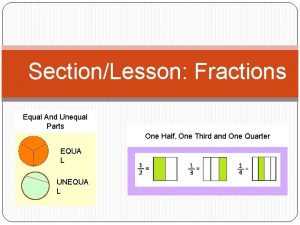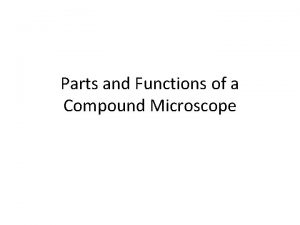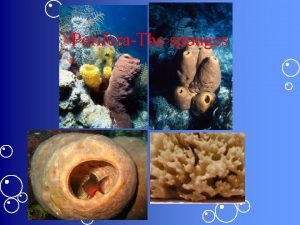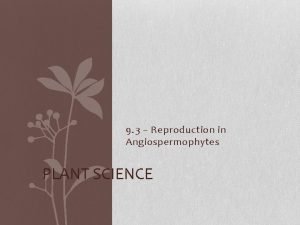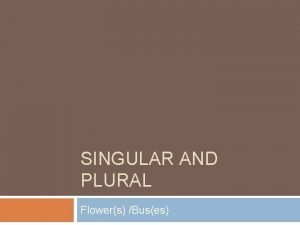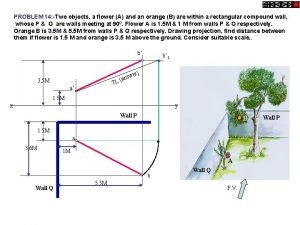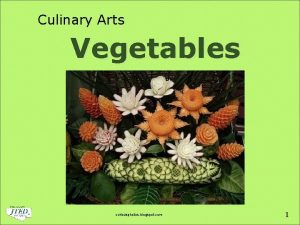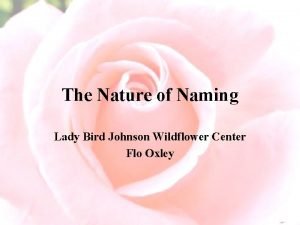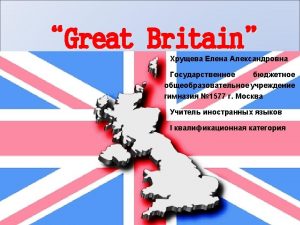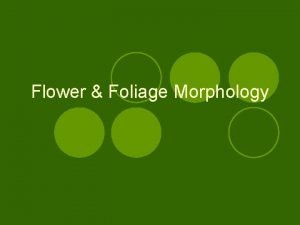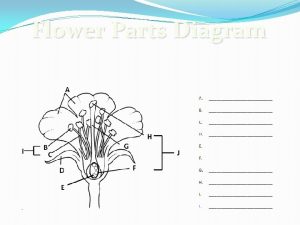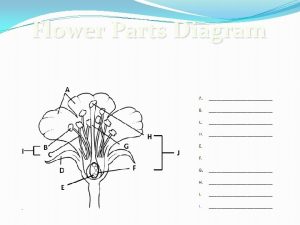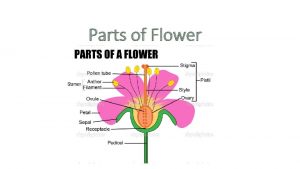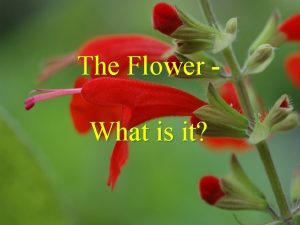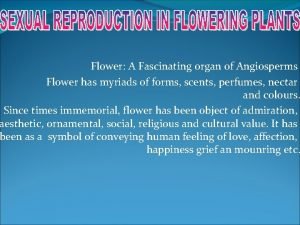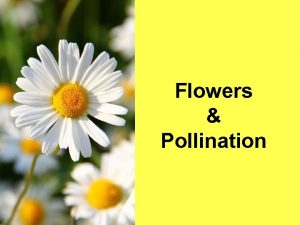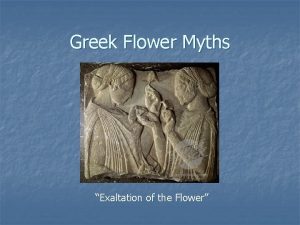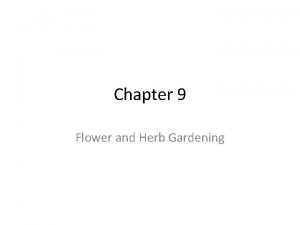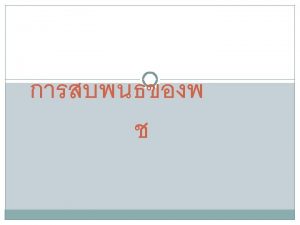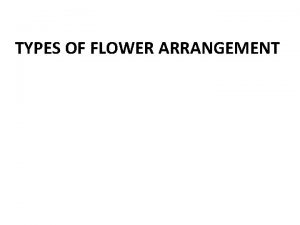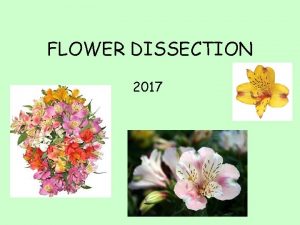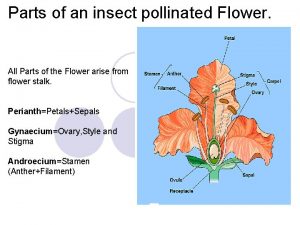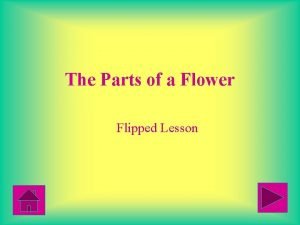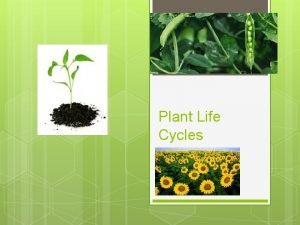The Parts of a Flower The Parts of




























































































- Slides: 92

The Parts of a Flower

The Parts of a Flower A flower is made up of rings The outermost ring is made of SEPAL The next ring inside of the sepal are the PETALS Inside the petals are a ring of STAMEN And last, in the CENTER of the flower is the PISTIL Click on the underlined words above to learn more about that part of a flower.

The Sepals Fun Facts about Sepals: Sepal are found at the base of the flower. Sepal look like green petals Sepals help protect the developing bud.

The Petals Fun Facts about Petals: Petals are the colorful part of a flower. Petals attract pollinators. Petal

The Stamen are the Male reproductive organs of a flower. The stamen produce the Male sex cells called pollen cells. Stamen Click here to learn about the parts of a Stamen

The Parts of a Stamen The stamen is made of two parts the Anther and the Filament The Filament is a stalk like structure that holds up the Anther The Anther produces the pollen cells.

The Pistil is the Female reproductive organ of a flower. The Pistil produces the Female sex cells called ovules (egg cells). Click here to learn about the parts of a Pistil

The Parts of a Pistil The pistil is made of three parts the Stigma, the Style, and the Ovary. The Stigma is the sticky surface at the top of the pistil. The ovary is at the base of the pistil and holds the ovules. Graphic taken from http: //www. urbanext. uiuc. edu/gpe/case 4/c 4 facts 1 a. html The Style is the tube like stalk that holds the stigma up.

Pollination and Fertilization Pollination: When pollen is moved from the male anther to the female stigma Fertilization: When pollen travels from the stigma, down the tube of the style to the ovary where it meets the ovules (eggs) to make a new seed. Pollen

Check Out this Video Clip! Click on the link below and a video clip about the parts of a flower will play for you! https: //youtu. be/dj. PVgip_bd. U

Now it is time for your Quiz! Are you ready? If you don’t feel ready yet and would like to review one more time click here to return to the start of the presentation. If you are ready click here.

Question #1 What is the Female Reproductive organ of the plant called? Click on the answer you think is correct. A. Sepal C. Pistil B. Anther D. Stamen

Question #2 What is the Male Reproductive organ of the plant called? Click on the answer you think is correct. A. Sepal C. Petal B. Style D. Stamen

Question #3 What is a Petal? Click on the answer you think is correct. A. The Female Reproductive Organ B. The Male Reproductive Organ C. The protection for the flower bud D. The colorful part of the flower

Question #4 What is a Sepal? Click on the answer you think is correct. A. The Female Reproductive Organ B. The Male Reproductive Organ C. The protection for the flower bud

Question #5 The anther and filament are parts Clickof onwhat the answer youpart? think is correct. flower A. Sepal C. Pistil B. Petal D. Stamen

Question #6 The ovary, stigma, and style are parts of what flower part? Click on the answer you think is correct. A. Sepal C. Pistil B. Petal D. Stamen

Question #7 The Ovary of a flower holds and produces the _____. Click on the answer you think is correct. A. Ovules Pistil B. Anther C. D. Pollen

Question #8 The Anther of the flower holds and produces the _____. Click on the answer you think is correct. A. Ovules Pistil B. Anther C. D. Pollen

Question #9 What are the Male sex cells of a flowering plant called? Click on the answer you think is correct. A. Stamen C. Pistil B. Style D. Pollen

Question #10 What are the Female sex cells of the flowering plant called? Click on the answer you think is correct. A. Ovules Pistil B. Anther C. D. Pollen

Correct! Nice Job Click here to return to Question #2

Correct! Nice Job Click here to return to Question #3

Correct! Nice Job Click here to return to Question #4

Correct! Nice Job Click here to return to Question #5

Correct! Nice Job Click here to return to Question #6

Correct! Nice Job Click here to return to Question #7

Correct! Nice Job Click here to return to Question #8

Correct! Nice Job Click here to return to Question #9

Correct! Nice Job Click here to return to Question #10

INCORREC Click here to refresh your T! memory about the Sepal

INCORREC Click here to refresh your T! memory about the Sepal

INCORREC Click here to refresh your T! memory about the Anther

INCORREC Click here to refresh your T! memory about the Stamen

INCORREC Click here to refresh your T! memory about the Sepal

INCORREC Click here to refresh your T! memory about the Petal

INCORREC Click here to refresh your T! memory about the Style

INCORREC Click here to refresh your T! memory about the Pistil

INCORREC Click here to refresh your T! memory about the Stamen

INCORREC Click here to refresh your T! memory about the Petal

INCORREC Click here to refresh your T! memory about the Pistil

INCORREC Click here to refresh your T! memory about the Stamen

INCORREC Click here to refresh your T! memory about the Petal

INCORREC Click here to refresh your T! memory about the Sepal

INCORREC Click here to refresh your T! memory about the Petal

INCORREC Click here to refresh your T! memory about the Sepal

INCORREC Click here to refresh your T! memory about the Sepal

INCORREC Click here to refresh your T! memory about the Petal

INCORREC Click here to refresh your T! memory about the Pistil

INCORREC Click here to refresh your T! memory about the parts of a Stamen

INCORREC Click here to refresh your T! memory about the Pollen

INCORREC Click here to refresh your T! memory about the Pistil

INCORREC Click here to refresh your T! memory about the Ovules

INCORREC Click here to refresh your T! memory about the Anther

INCORREC Click here to refresh your T! memory about the Pistil

INCORREC Click here to refresh your T! memory about the Stamen

INCORREC Click here to refresh your T! memory about the Style

INCORREC Click here to refresh your T! memory about the Pistil

INCORREC Click here to refresh your T! memory about the Anther

INCORREC Click here to refresh your T! memory about the Pistil

INCORREC Click here to refresh your T! memory about the Pollen

The Sepals Review Fun Facts about Sepals: Sepal are found at the base of the flower. Sepal look like green petals Sepals help protect the developing bud. Back to Quiz

The Parts of a Stamen Review The stamen is made of two parts the Anther and the Filament The Filament is a stalk like structure that holds up the Anther. Back to Quiz Anther The Anther produces the pollen cells.

The Stamen Review Stamen are the Male reproductive organs of a flower. The stamen produce the Male sex cells called pollen cells. Stamen Back to Quiz

The Stamen Review Stamen are the Male reproductive organs of a flower. The stamen produce the Male sex cells called pollen cells. Stamen Back to Quiz

The Sepals Review Fun Facts about Sepals: Sepal are found at the base of the flower. Sepal look like green petals Sepals help protect the developing bud. Back to Quiz

The Petals Review Fun Facts about Petals: Petals are the colorful part of a flower. Petals attract pollinators. Petal Back to Quiz

The Parts of a Pistil Review The pistil is made of three parts the Stigma, the Style, and the Ovary. The Stigma is the sticky surface at the top of the pistil. The ovary is at the base of the pistil and holds the ovules. Graphic taken from http: //www. urbanext. uiuc. edu/gpe/case 4/c 4 facts 1 a. html Back to Quiz The Style is the tube like stalk that holds the stigma up.

The Pistil Review Pistil The Pistil is the Female reproductive organ of a flower. The Pistil produces the Female sex cells called ovules (egg cells). Back to Quiz

The Stamen Review Stamen are the Male reproductive organs of a flower. The stamen produce the Male sex cells called pollen cells. Stamen Back to Quiz

The Sepals Review Fun Facts about Sepals: Sepal are found at the base of the flower. Sepal look like green petals Sepals help protect the developing bud. Back to Quiz

The Pistil Review Pistil The Pistil is the Female reproductive organ of a flower. The Pistil produces the Female sex cells called ovules (egg cells). Back to Quiz

The Stamen Review Stamen are the Male reproductive organs of a flower. The stamen produce the Male sex cells called pollen cells. Stamen Back to Quiz

The Petals Review Fun Facts about Petals: Petals are the colorful part of a flower. Petals attract pollinators. Petal Back to Quiz

The Sepals Review Fun Facts about Sepals: Sepal are found at the base of the flower. Sepal look like green petals Sepals help protect the developing bud. Back to Quiz

The Petals Review Fun Facts about Petals: Petals are the colorful part of a flower. Petals attract pollinators. Petal Back to Quiz

The Pistil Review Pistil The Pistil is the Female reproductive organ of a flower. The Pistil produces the Female sex cells called ovules (egg cells). Back to Quiz

The Sepals Review Fun Facts about Sepals: Sepal are found at the base of the flower. Sepal look like green petals Sepals help protect the developing bud. Back to Quiz

The Petals Review Fun Facts about Petals: Petals are the colorful part of a flower. Petals attract pollinators. Petal Back to Quiz

The Stamen Review Stamen are the Male reproductive organs of a flower. The stamen produce the Male sex cells called pollen cells. Stamen Back to Quiz

The Parts of a Stamen Review The stamen is made of two parts the Anther and the Filament The Filament is a stalk like structure that holds up the Anther. Back to Quiz Anther The Anther produces the pollen cells.

The Pistil Review Pistil The Pistil is the Female reproductive organ of a flower. The Pistil produces the Female sex cells called ovules (egg cells). Back to Quiz

The Pistil Review Pistil The Pistil is the Female reproductive organ of a flower. The Pistil produces the Female sex cells called ovules (egg cells). Back to Quiz

The Parts of a Stamen Review The stamen is made of two parts the Anther and the Filament The Filament is a stalk like structure that holds up the Anther. Back to Quiz Anther The Anther produces the pollen cells.

The Stamen Review Stamen are the Male reproductive organs of a flower. The stamen produce the Male sex cells called pollen cells. Stamen Back to Quiz

The Parts of a Pistil Review The pistil is made of three parts the Stigma, the Style, and the Ovary. The Stigma is the sticky surface at the top of the pistil. The ovary is at the base of the pistil and holds the ovules. Graphic taken from http: //www. urbanext. uiuc. edu/gpe/case 4/c 4 facts 1 a. html Back to Quiz The Style is the tube like stalk that holds the stigma up.

The Pistil Review Pistil The Pistil is the Female reproductive organ of a flower. The Pistil produces the Female sex cells called ovules (egg cells). Back to Quiz

The Parts of a Stamen Review The stamen is made of two parts the Anther and the Filament The Filament is a stalk like structure that holds up the Anther. Back to Quiz Anther The Anther produces the pollen cells.

The Pistil Review Pistil The Pistil is the Female reproductive organ of a flower. The Pistil produces the Female sex cells called ovules (egg cells). Back to Quiz

INCORREC Click here to refresh your T! memory about the Stamen

Correct! Nice Job Congratulations on finishing your quiz!

For more Flower Part Info…. Check out: • https: //extension. illinois. edu/gpe/case 4/c 4 m 1. html There is a game that you can play and learn more about the parts of a flower!
 Ovary superior
Ovary superior Function of plants
Function of plants Angiospermophytes
Angiospermophytes Parts of flower
Parts of flower Part of flower that produces pollen
Part of flower that produces pollen Alstroemeria flower diagram
Alstroemeria flower diagram Parts of the root
Parts of the root Part of the flower that contains pollen
Part of the flower that contains pollen All plants have flowers
All plants have flowers Parts of aseed
Parts of aseed Vegetative structures
Vegetative structures Life cycle of pinus
Life cycle of pinus Regular vs irregular flowers
Regular vs irregular flowers What are the male parts of a flower
What are the male parts of a flower Plant parts and functions
Plant parts and functions Seed
Seed Floral primordium
Floral primordium Flower female parts
Flower female parts Structure of kingdom plantae
Structure of kingdom plantae Function of anther in flower
Function of anther in flower Parts of the flower grade 3
Parts of the flower grade 3 Inferior ovary
Inferior ovary Calyx corolla flower parts
Calyx corolla flower parts Flower parts and functions
Flower parts and functions Plant flower function
Plant flower function Flower morphology
Flower morphology Flower basics
Flower basics Female parts of plants
Female parts of plants Parts of flower
Parts of flower Parts of female plant
Parts of female plant Nguyên nhân của sự mỏi cơ sinh 8
Nguyên nhân của sự mỏi cơ sinh 8 Trời xanh đây là của chúng ta thể thơ
Trời xanh đây là của chúng ta thể thơ Voi kéo gỗ như thế nào
Voi kéo gỗ như thế nào Thiếu nhi thế giới liên hoan
Thiếu nhi thế giới liên hoan Tia chieu sa te
Tia chieu sa te Một số thể thơ truyền thống
Một số thể thơ truyền thống Thế nào là hệ số cao nhất
Thế nào là hệ số cao nhất Frameset trong html5
Frameset trong html5 Hệ hô hấp
Hệ hô hấp So nguyen to
So nguyen to Tư thế ngồi viết
Tư thế ngồi viết đặc điểm cơ thể của người tối cổ
đặc điểm cơ thể của người tối cổ Mật thư anh em như thể tay chân
Mật thư anh em như thể tay chân Các châu lục và đại dương trên thế giới
Các châu lục và đại dương trên thế giới Thang điểm glasgow
Thang điểm glasgow ưu thế lai là gì
ưu thế lai là gì Thẻ vin
Thẻ vin Cái miệng bé xinh thế chỉ nói điều hay thôi
Cái miệng bé xinh thế chỉ nói điều hay thôi Các châu lục và đại dương trên thế giới
Các châu lục và đại dương trên thế giới Từ ngữ thể hiện lòng nhân hậu
Từ ngữ thể hiện lòng nhân hậu Bổ thể
Bổ thể Tư thế ngồi viết
Tư thế ngồi viết V cc
V cc Làm thế nào để 102-1=99
Làm thế nào để 102-1=99 Thơ thất ngôn tứ tuyệt đường luật
Thơ thất ngôn tứ tuyệt đường luật Chúa yêu trần thế
Chúa yêu trần thế Khi nào hổ con có thể sống độc lập
Khi nào hổ con có thể sống độc lập đại từ thay thế
đại từ thay thế Diễn thế sinh thái là
Diễn thế sinh thái là Vẽ hình chiếu vuông góc của vật thể sau
Vẽ hình chiếu vuông góc của vật thể sau Công thức tính độ biến thiên đông lượng
Công thức tính độ biến thiên đông lượng Thế nào là mạng điện lắp đặt kiểu nổi
Thế nào là mạng điện lắp đặt kiểu nổi Tỉ lệ cơ thể trẻ em
Tỉ lệ cơ thể trẻ em Lời thề hippocrates
Lời thề hippocrates Vẽ hình chiếu đứng bằng cạnh của vật thể
Vẽ hình chiếu đứng bằng cạnh của vật thể Phản ứng thế ankan
Phản ứng thế ankan Quá trình desamine hóa có thể tạo ra
Quá trình desamine hóa có thể tạo ra Các môn thể thao bắt đầu bằng tiếng nhảy
Các môn thể thao bắt đầu bằng tiếng nhảy Hát kết hợp bộ gõ cơ thể
Hát kết hợp bộ gõ cơ thể Sự nuôi và dạy con của hổ
Sự nuôi và dạy con của hổ điện thế nghỉ
điện thế nghỉ Dot
Dot What is optional in a business letter
What is optional in a business letter 6 chief parts of luther's small catechism
6 chief parts of luther's small catechism Unequal half
Unequal half Compound microscope mechanical parts
Compound microscope mechanical parts The five guildsmen canterbury tales
The five guildsmen canterbury tales Wedding venuss
Wedding venuss Long day plants flower
Long day plants flower Spike flower arrangement
Spike flower arrangement Flowers singular or plural
Flowers singular or plural Ramu observes a flower on the ground from the balcony
Ramu observes a flower on the ground from the balcony Stem we eat
Stem we eat Ladu bird
Ladu bird I had ____ fish and ____ chips for dinner
I had ____ fish and ____ chips for dinner Are plants eukaryotic
Are plants eukaryotic Four flowers of uk
Four flowers of uk Unit 4 shopping
Unit 4 shopping Lovelock flower of service
Lovelock flower of service Northern ireland national flower
Northern ireland national flower Petal function
Petal function What is the national flower of england
What is the national flower of england Tinkercad flower
Tinkercad flower
